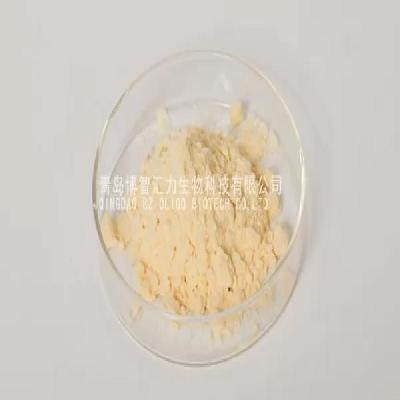-
Categories
-
Pharmaceutical Intermediates
-
Active Pharmaceutical Ingredients
-
Food Additives
- Industrial Coatings
- Agrochemicals
- Dyes and Pigments
- Surfactant
- Flavors and Fragrances
- Chemical Reagents
- Catalyst and Auxiliary
- Natural Products
- Inorganic Chemistry
-
Organic Chemistry
-
Biochemical Engineering
- Analytical Chemistry
-
Cosmetic Ingredient
- Water Treatment Chemical
-
Pharmaceutical Intermediates
Promotion
ECHEMI Mall
Wholesale
Weekly Price
Exhibition
News
-
Trade Service
Kasaoka City, Okayama Prefecture, Japan, is expanding the introduction of renewable energy power generation equipment
.
The city faces the Seto Inland Sea and has extensive reclamation along the coast, using this corner of the land to build photovoltaic power generation projects
.
In addition, the city uses water to build photovoltaic power stations
.
In September 2016, the city decided to build a floating photovoltaic power plant
with a new reservoir.
The floating photovoltaic power plant is built in the Iwanoike,
an agricultural reservoir located in the Yamaguchi area of Kasaoka City.
In September 2016, Kasaoka City recruited operators of photovoltaic power generation facilities to install them through
tenders.
After reviewing the proposals of both companies, Strawberry ECO Energy was selected as the implementation operator
.
Iwanoike has a total area of 59,906 square meters
.
Among them, photovoltaic power generation equipment covers an area of up to 26,000 square meters
.
According to the operator's proposal, the number of PV panels and output are adjusted
.
Japan's first floating photovoltaic power plant is located in Barrel River City, Saitama Prefecture, with 4,500 photovoltaic modules installed on 12,400 square meters of water and a power generation capacity of 1.
18MW.
The area of the new floating photovoltaic power plant on Iwano Pond is about 2.
1 times
that of the photovoltaic power plant.
In June 2016, Kasaoka City began to build a rooftop power plant using reservoirs to generate electricity
.
A power station is built on
the city's "Reservoir No.
11".
The power station is operated
by Osaka Natural Gas Group's Energy Bank Japan leased land in Kasaoka City.
The photovoltaic power plant has an installation area of about 10,000 square meters and 3,744 photovoltaic panels
.
The power generation capacity is 973KW, and the annual power generation is expected to reach 1 million kWh
.
This is equivalent to the usage
of 280 households.
All electricity generated is sold to China Power Corporation
.
The photovoltaic panels for the power station, produced by the French company Shelltail, float on the
water through buoys.
The use of high-density polyethylene as raw material has high
corrosion prevention and deterioration prevention performance.
Relatively speaking, Kasaoka City receives less rainfall, and rice is generally cultivated in reservoirs
.
There are more than 1,000 cisterns
of all sizes in the city.
Among them, there are more than 200 pools with a revenue area of more than 20,000 square meters
.
Due to aging, water leakage, etc.
, the city is undergoing repairs
.
Those unusable reservoirs can be used to build photovoltaic power plants
on the water.
Kasaoka City, Okayama Prefecture, Japan, is expanding the introduction of renewable energy power generation equipment
.
The city faces the Seto Inland Sea and has extensive reclamation along the coast, using this corner of the land to build photovoltaic power generation projects
.
In addition, the city uses water to build photovoltaic power stations
.
In September 2016, the city decided to build a floating photovoltaic power plant
with a new reservoir.
The floating photovoltaic power plant is built in the Iwanoike,
an agricultural reservoir located in the Yamaguchi area of Kasaoka City.
In September 2016, Kasaoka City recruited operators of photovoltaic power generation facilities to install them through
tenders.
After reviewing the proposals of both companies, Strawberry ECO Energy was selected as the implementation operator
.
Iwanoike has a total area of 59,906 square meters
.
Among them, photovoltaic power generation equipment covers an area of up to 26,000 square meters
.
According to the operator's proposal, the number of PV panels and output are adjusted
.
Japan's first floating photovoltaic power plant is located in Barrel River City, Saitama Prefecture, with 4,500 photovoltaic modules installed on 12,400 square meters of water and a power generation capacity of 1.
18MW.
The area of the new floating photovoltaic power plant on Iwano Pond is about 2.
1 times
that of the photovoltaic power plant.
In June 2016, Kasaoka City began to build a rooftop power plant using reservoirs to generate electricity
.
A power station is built on
the city's "Reservoir No.
11".
The power station is operated
by Osaka Natural Gas Group's Energy Bank Japan leased land in Kasaoka City.
The photovoltaic power plant has an installation area of about 10,000 square meters and 3,744 photovoltaic panels
.
The power generation capacity is 973KW, and the annual power generation is expected to reach 1 million kWh
.
This is equivalent to the usage
of 280 households.
All electricity generated is sold to China Power Corporation
.
The photovoltaic panels for the power station, produced by the French company Shelltail, float on the
water through buoys.
The use of high-density polyethylene as raw material has high
corrosion prevention and deterioration prevention performance.
Relatively speaking, Kasaoka City receives less rainfall, and rice is generally cultivated in reservoirs
.
There are more than 1,000 cisterns
of all sizes in the city.
Among them, there are more than 200 pools with a revenue area of more than 20,000 square meters
.
Due to aging, water leakage, etc.
, the city is undergoing repairs
.
Those unusable reservoirs can be used to build photovoltaic power plants
on the water.







